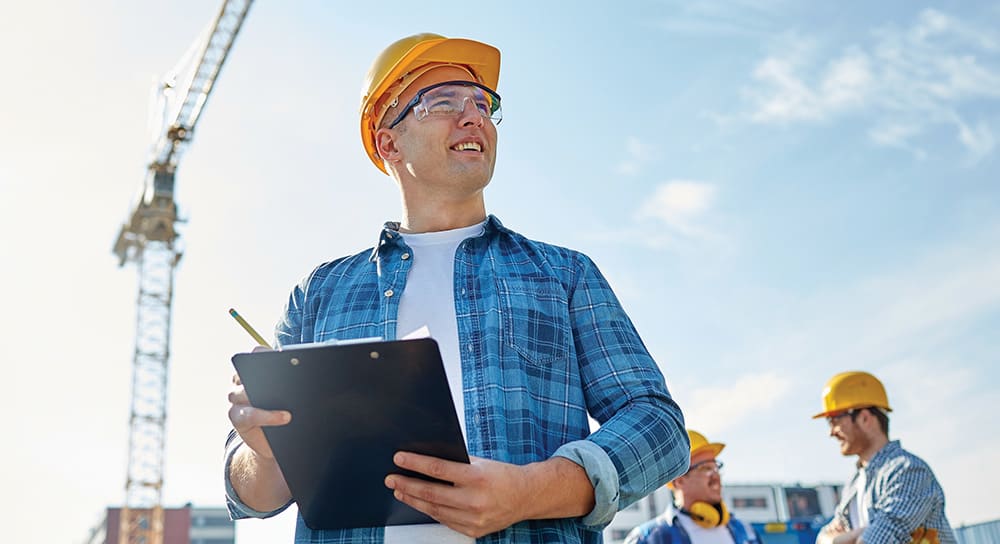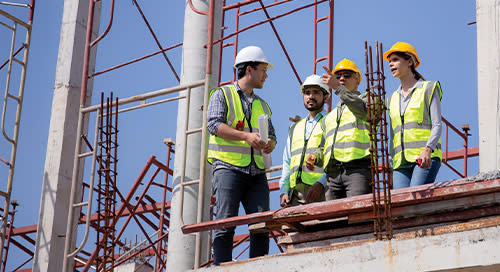Headsets such as the Oculus Rift and HTC’s Vive are appearing and creating buzz in AE offices; where virtual reality (VR) is becoming the new normal in communicating design intent with both customers and consultants. VR might even become an asset in training programs, such as apprenticeships. However, there is another, potentially more effective tool appearing in safety training programs across the country. It’s called augmented reality. And it’s going to completely change the way workers interact with the chaotic environments of the typical construction jobsite.
What is Augmented Reality?
Augmented reality (AR) is a digital overlay of the real, analog world. It is different than its VR counterpart, in that with VR the user is completely immersed in the digital world. Great for marketing and maybe simulated training offsite, but a poor choice for an actual jobsite where situational awareness can mean life and death.
Image courtesy of Daqri
AR, on the other hand, masks digital computer-generated objects on top of a screen, such as a smartphone. This application was recently made popular via the mobile game Pokemon Go. An AR app can recognize real world objects and then generate a digital image or animation that maps over them through a laptop, tablet, your smartphone, or even a wearable such as Daqri’s Smart Helmet that is currently in use by Mortenson Construction.
And if the strange visage of a connected hardhat isn’t your thing, Microsoft Hololens is currently being used to locate pipes for a New Jersey water utility.
However, augmented reality also can help construction companies avoid potential safety hazards with more customized on-site training, using the jobsite conditions before physical equipment and materials are in place. A contractor can also superimpose helpful training media in the corner of the laborer’s visor screen, providing something of a YouTube tutorial for a given detail, allowing for a better adherence to design specifications. Such training might even help prevent some of OSHA’s top 25 construction violations, further assisting construction companies in reducing risk and becoming more profitable!
In 2018 and beyond, we will be keeping a close eye on how mixed realities such as AR and VR are causing major disruptions to an industry that has historically been slow to adapt.





















